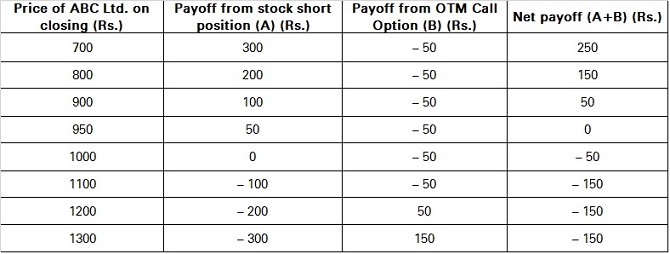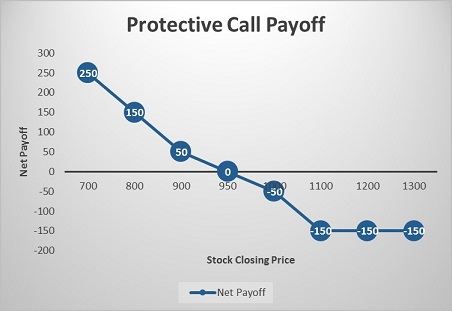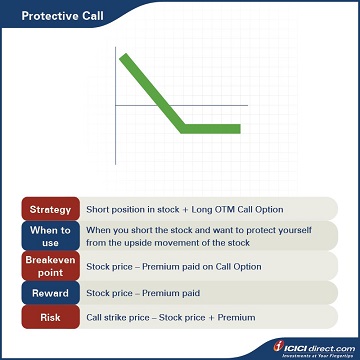Learning Modules Hide
Hide
- Chapter 1: Basics of Derivatives
- Chapter 2: Futures and Forwards: Know the basics – Part 1
- Chapter 3: Futures and Forwards: Know the basics – Part 2
- Chapter 4: A Complete Guide to Futures Trading
- Chapter 5: Futures Terminology
- Chapter 6 – Futures Trading – Part 1
- Chapter 7 – Futures Trading – Part 2
- Chapter 8: Understand Advanced Concepts in Futures
- Chapter 9: Participants in the Futures Market
- Chapter 1: Introduction to Derivatives
- Chapter 2: Introduction to Options
- Chapter 3: An Options Trading Course for Option Trading Terminology
- Chapter 4: All About Options Trading Call Buyer
- Chapter 5: All About Short Call in Options Trading
- Chapter 6: Learn Options Trading: Long Put (Put Buyer)
- Chapter 7: Learn Options Trading: Short Put (Put Seller)
- Chapter 8: Options Summary
- Chapter 9: Learn Advanced Concepts in Options Trading – Part 1
- Chapter 10: Learn Advanced Concepts in Options – Part 2
- Chapter 11: Learn Option Greeks – Part 1
- Chapter 12: Option Greeks – Part 2
- Chapter 13: Option Greeks – Part 3
- Chapter 1: Learn Types of Option Strategies
- Chapter 2: All About Bull Call Spread
- Chapter 3: All About Bull Put Spread
- Chapter 4: Covered Call
- Chapter 5: Bear Call Spread
- Chapter 6: Understand Bear Put Spread Option Strategy
- Chapter 7: Learn about Covered Put
- Chapter 8: Understand Long Call Butterfly in Detail
- Chapter 9: Understand Short Straddle Strategy in Detail
- Chapter 10: Understand Short Strangle Option Strategy in Detail
- Chapter 11: Understand Iron Condor Options Trading Strategy
- Chapter 12: A Comprehensive Guide to Long Straddle
- Chapter 13: Understand Long Strangle Option Strategy in Detail
- Chapter 14: Understand Short Call Butterfly Option Trading Strategy
- Chapter 15: Understanding Protective Put Strategy
- Chapter 16: Protective Call
- Chapter 17: Delta Hedging Strategy: A Complete Guide for Beginners
Chapter 16: Protective Call
When Abhinav’s boss asks him to suggest a strategy to hedge the short position of a stock, he recommends the Protective Call Option. In this chapter, we will view the details of this strategy.
Protective Call
A Protective Call strategy is used to hedge the short position of a stock by purchasing an ATM or slightly OTM Call Option. This strategy works well in a scenario when you short the stock and want to protect yourself from the upside movement of the stock.
This position is also called Synthetic Long Put, but net payout is positive. You receive money on shorting the stock and pay the premium to buy a Call.
Strategy: Short position in stock + Long OTM Call Option
When to use: When you short the stock and want to protect yourself from the upside movement of the stock.
Breakeven: Stock price – Premium paid on Call Option
Maximum profit: Stock price – Premium paid
Maximum risk: Call strike price – Stock price + Premium
Let’s understand this with an example:
Assume that the spot price of ABC Ltd. is Rs. 1,000. Abhinav buys an ABC Ltd. OTM Call Option at a strike price of Rs. 1,100 at Rs. 50. He pays a total premium of Rs. 50. The breakeven point in this case will be Rs. 1,000 – Rs. 50 = Rs. 950.
Maximum profit will be limited to stock price – premium i.e. Rs. 1,000 – Rs. 50 = Rs. 950 when stock price becomes zero. The maximum risk in this position will be Rs. 1,100 – Rs. 1,000 + Rs. 50 = Rs. 150.
Let’s look at the cash flow in various scenarios:

Let us understand the payoff in various scenarios. It will give you a fair idea of how we have arrived at the above values.
If the stock closes at Rs. 800 on expiry: The long Call Option will expire OTM
The selling price of the stock = Rs. 1000
The purchase price of the stock on expiry = Rs. 800
So, the payoff from the spot position = Selling price – Purchase price = 1000 – 800 = Rs. 200
Premium paid on the OTM Call Option of strike price Rs.1100 = Rs. 50
Premium received on the OTM Call Option of strike price Rs. 1100 at expiry = Max {0, (Spot price – Strike price)} = Max {0, (800 – 1100)} = Max (0, – 300) = 0
So, the payoff from the OTM Call Option = Premium received – Premium paid = 0 – 50 = – Rs. 50
Net payoff = Payoff from the spot position + Payoff from OTM Call Option = 200 + (– 50) = Rs. 150
If the stock closes at Rs. 950 on expiry: The long Call Option will expire OTM
The selling price of the stock = Rs. 1000
The purchase price of the stock on expiry = Rs. 950
So, the payoff from the spot position = Selling price – Purchase price = 1000 – 950 = Rs. 50
Premium paid on the OTM Call Option of strike price Rs.1100 = Rs. 50
Premium received on OTM Call Option of strike price Rs. 1100 at expiry = Max {0, (Spot price – Strike price)} = Max {0, (950 – 1100)} = Max (0, – 150) = 0
So, the payoff from the OTM Call Option = Premium received – Premium paid = 0 – 50 = – Rs. 50
Net payoff = Payoff from the spot position + Payoff from OTM Call Option = 50 + (– 50) = 0
If the stock closes at Rs. 1200 on expiry: The long Call Option will expire ITM
The selling price of the stock = Rs. 1000
The purchase price of the stock on expiry = Rs. 1200
So, the payoff from the spot position = Selling price – Purchase price = 1000 – 1200 = – Rs. 200
Premium paid on the OTM Call Option of strike price Rs.1100 = Rs. 50
Premium received on OTM Call Option of strike price Rs. 1100 at expiry = Max {0, (Spot price – Strike price)} = Max {0, (1200 – 1100)} = Max (0, 100) = Rs. 100
So, the payoff from the OTM Call Option = Premium received – Premium paid = 100 – 50 = Rs. 50
Net payoff = Payoff from the spot position + Payoff from OTM Call Option = (– 200) + 50 = – Rs. 150
Additional Read: Chapter 2: Introduction to Options

Summary

- A Protective Call strategy is used to hedge the short position of a stock by purchasing an ATM or slightly OTM Call Option.
- This strategy works well in a scenario when you short the stock and want to protect yourself from its upside movement.
- Breakeven: Stock price – Premium paid on Call Option
- Maximum profit: Stock price – Premium paid
- Maximum risk: Call strike price – Stock price + Premium
In the next chapter, we will look into Delta Hedging. This strategy allows you to hedge the risk associated with the change in delta due to the underlying asset's price movement.
Disclaimer:
ICICI Securities Ltd. ( I-Sec). Registered office of I-Sec is at ICICI Securities Ltd. - ICICI Venture House, Appasaheb Marathe Marg, Prabhadevi, Mumbai - 400 025, India, Tel No : 022 - 2288 2460, 022 - 2288 2470. The contents herein above shall not be considered as an invitation or persuasion to trade or invest. I-Sec and affiliates accept no liabilities for any loss or damage of any kind arising out of any actions taken in reliance thereon. The contents herein above are solely for informational purpose and may not be used or considered as an offer document or solicitation of offer to buy or sell or subscribe for securities or other financial instruments or any other product. Investments in securities market are subject to market risks, read all the related documents carefully before investing. The contents herein mentioned are solely for informational and educational purpose.

 Top Mutual Funds
Top Mutual Funds





COMMENT (0)